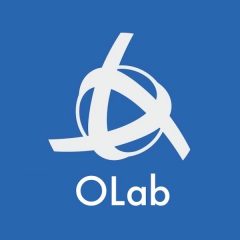In virtual patients and virtual scenarios, there are a few pockets around the world with significant influence on their development and promulgation. Calgary has become a noted leader with many contributions in ideas, tools, platforms and learning designs.
Back in 2015, we thought it would be interesting to look around and see what various activities have fueled the rise of virtual scenarios and their broad use. Our particular interest lay in finding out how widely our OpenLabyrinth platform has been adopted. We were delighted to find over 150 published studies whose work was based, at least in part, on our OpenLabyrinth platform.[1]
Early on, it was recognized that there was a risk in putting on your efforts into a single piece of software. If that software died, all your case materials would die too. Around 2005, driven by the European Virtual Patient (eViP) project,[2] a large group of organizations who were working in health professional education, strove to create a data standard that would afford portability of case materials from one platform to another.
These efforts were taken forwards by Medbiquitous, an organization devoted to the development and dissemination of health data standards, particularly in education. Building upon the work of eViP, a virtual patient working group from Medbiq created a set of data and functional standards. Eventually this group was successful in getting these standards adopted by ANSI, which lead to much wider adoption.
In the early days, virtual patient platforms tended to support mostly linear cases: those with a fairly simple narrative pathway. However, some learning designers were keen to explore what could be done with more complex pathways, with no predefined notion of how one might navigate their narrative: in the style of Choose-Your-Own-Adventure books, your decisions during the case affected how it played out.
Labyrinth, created by Rachel Ellaway when she was in Edinburgh, was a notable early devotee of the branching style of virtual patient.[3] Even though the case design software was rather plain, even ugly, it was clear back then what could be done with such learning designs.
Labyrinth became OpenLabyrinth, an open-source, open-standard platform, that strongly supported all of the facets of the ANSI/Medbiq Virtual Patient standard.[4] Supported by a loose consortium of health professional schools from around the world, OpenLabyrinth has remained in active development since then, with ideas contributed by partners both within and without the consortium.
In 2011, OpenLabyrinth moved to a different software platform, but in testimony to its solid yet flexible original architecture, very little about the underlying data schema was changed.[5] Since then, OpenLabyrinth has grown into a very capable educational research platform with functions that go way beyond its original mandate. Many of the additional functions were driven by the educational research needs of funding projects.
The software teams that supported OpenLabyrinth also recognized that, rather being a one-size-fits-all Swiss army knife monolith (and a bag of mixed metaphors to boot), it would make sense to take a similar approach to the WordPress design: create a solid core upon which you could build other modules, services and add-ins.
CURIOS, a video mashup tool, was the first such service.[6] Using the Learning Tools Interoperability (LTI) standard [7], the team was able to build a standalone service, without having to build all the usual IAM and control paraphernalia that go with it. Since then, OpenLabyrinth has developed links to a number of other tools and services, such as HP5 widgets, xAPI activity metrics and CIGARS, the context-identifier service that supports multiplatform activity tracking.
Since 2011, the University of Calgary has been a leading force in the development of the OpenLabyrinth platform. Because nobody can remember how to spell labyrinth, the name was often shortened to O-Lab. Now, with the latest version of software that is very research focused, OLab has become its proper name.[8]
References
- Topps D, Ellaway RH. Annotated Bibliography for OpenLabyrinth [Internet]. Calgary; 2015. Available from: https://www.researchgate.net/publication/290275928_Annotated_Bibliography_for_OpenLabyrinth
- Smothers V, Ellaway R, Balasubramaniam C. eViP: sharing virtual patients across Europe. AMIA Annu Symp Proc. 2008;1140.
- Smothers V, Azan B, Ellaway RH. ANSI /MEDBIQ VP.10.1-2010 MedBiquitous Virtual Patient Specifications and Description Document [Internet]. Baltimore, MD; 2010. Available from: http://www.medbiq.org/working_groups/virtual_patient/VirtualPatientDataSpecification.pdf
- Begg M, Ellaway R, Dewhurst D, Macleod H. Transforming professional healthcare narratives into structured game-informed-learning activities. Innovate [Internet]. 2007; Available from: http://www.academia.edu/download/30866279/transforming_professional_healthcare_narratives_into_structured_game-informed-learning_activities.pdf
- Topps D, Ellaway R, Rud S. OpenLabyrinth v3.4.1 source code – OLab Dataverse [Internet]. Calgary: OHMES, University of Calgary; 2019 [cited 2019 May 9]. Available from: https://dataverse.scholarsportal.info/dataset.xhtml?persistentId=doi:10.5683/SP2/7OFRIJ
- Topps D, Rud S, Cooke L. CURIOS video mashup web service [Internet]. V1 ed. Scholars Portal Dataverse; 2019. Available from: https://doi.org/10.5683/SP2/YUVAXG
- IMS Global: Learning Tools Interoperability (LTI) [Internet]. IMS Global Learning Consortium. 2012 [cited 2013 Jul 16]. Available from: http://www.webcitation.org/6arGC9Thy
- Wirun C, Topps D, Ellaway R. OLab4 4.0 alpha release of source code – OLab Dataverse [Internet]. Calgary: OHMES, University of Calgary; 2019 [cited 2019 May 13]. Available from: https://dataverse.scholarsportal.info/dataset.xhtml?persistentId=doi:10.5683/SP2/RRJC3D

